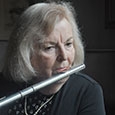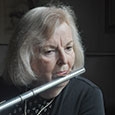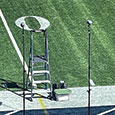One of the most difficult concepts to teach about playing rhythms is that they are not played as written. J.J. Quantz wrote in 1752 “The notes must not appear to be glued together.” What he meant is that notes are played shorter than written, and the silence created between them is referred to as an articulatory silence. While Quantz was writing about performing Baroque music, his ideas are the foundation of wind playing. One band director often said, “Notes are played shorter than written.”
While listening to one of the really fine Texas bands, I mentioned to the band director how good it was to hear his students playing in a spaced style and expressed admiration for his ability to get the students to play in this manner. He said, “I spend all of high school cleaning up middle school where the curriculum teaches that notes are held full value. The only time a note is held full value is when it is under a slur.” This is illustrated in this example:
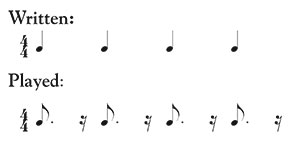
The following are a few other concepts that will make bands shine in performance. These were gleaned from working with Frederick Fennell at the Eastman School of Music and several other studio teachers.
One Note is of Longer Value
In this situation, notes of shorter value should lead to longer notes.
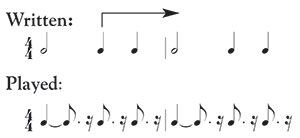
Syncopated Rhythms
The articulatory silence or spacing of notes applies to syncopated rhythms too. Syncopated rhythms emphasize the weak beat with a slight decay or diminuendo and are spaced for clarity. If the syncopated notes are the same pitch, there should be a dynamic plan for playing these notes. The rule of the strength of the beat might be a good choice.
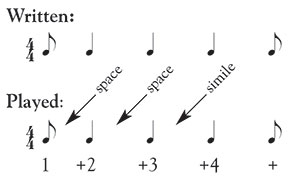
Dots
Dots above notes signify a staccato. Staccato means detached not just short. This means that the note before the staccato note is shortened with an articulatory silence.
If there is no slur, then dots after a note implies a rest. Once again this is because the short note leads into the longer note. Many musicians find saying, Day, To-day, to-day to be helpful in creating a good rhythmic ensemble.
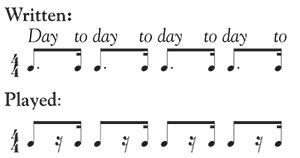
Two-note Slurs
Two-note slurs are played loud to soft always. Even if the passage is marked with a crescendo, each two-note slur becomes louder as a unit, but still retains the loud/soft or strong/weak character within the unit.
.jpg)
Compound Meter
This is when the beat is divisible by threes such as 6/8, 9/8, and 12/8. Many students have a foggy view of compound meter and often play by ear following along, rather than understanding the math. The two most common rhythms are long/short and short/long.
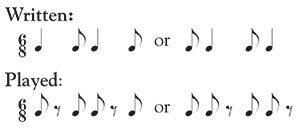
Siciliano Rhythm
The siciliano or “Amsterdam” rhythm can also lead to difficulties. Many a professional orchestra has fallen into the rhythmic trap of the first movement of Beethoven’s Symphony No. 7.
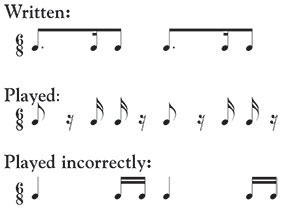
The Accent
The accent (>) has two meanings, playing the note with emphasis or playing as a little diminuendo. Unfortunately, most method books teach the emphasis model while most orchestral compositions sound better with the little diminuendo. The shape of the little diminuendo tapers to a softer dynamic level. Practicing four little diminuendo notes to each pitch of a scale is an excellent way to work on this concept. The student takes a sip breath between each note and tries to make each note as vibrant and resonant as possible. Practicing this full range is beneficial to expressive performance.

The Loop
James Caldwell, legendary oboe professor at Oberlin, taught his students to make a loop when playing tied notes. The loop is the name of the way the player envisions his air column traveling through the reed/instrument. The player starts the note strongly, then decays (diminuendo) or slightly slows down the air speed to the tie, and then continues softly while increasing the dynamic slightly. The rule DDT (decay to the dot or tie) is an easy memorable way to teach this.
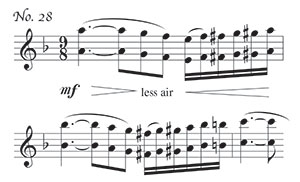
Unisonal Scales by William C. White, part 3 (published by Carl Fischer). When I was a young band student, every rehearsal began with focusing on something from each of the three parts of this book. The first part is scales and intervals in various rhythms; part 2 is major and minor scales; and finally part 3 is short etudes. The entire book is played in unison. Year after year, the band director continued with the curriculum of this book, only the tempos became faster and faster, and he became pickier about our execution of rhythmic notation.
A few years ago, I was teaching a residency for Bruce Dinkins (1951-2011), former band director of Bowie High School in Austin, Texas (Interview in The Instrumentalist, May 2011). I was surprised to see that he was using the Unisonal Scale book also, especially Part 2, No. 1. This exercise alternates major and relative minor scales played in sixteenths. Besides all the winds and brass players, each marimba and xylophone had two students playing the same music. He turned on the room metronome and off the band went in perfect unison. I was pleasantly surprised at the clarity of the ensemble and especially how well the brass and percussion did with the scales. This exercise was repeated several times. Each time the metronome increased a tick until the tempo was well over quarter note = 104. Eventually someone missed and he said to the group, “Don’t you take this seriously? Somewhere in the US there is a great band practicing this right now.”
Through the years, when I have had private students who were not privileged to participate in a great program, I have taken them through the Unisonal Scale book. The book is that good. A great player melds technical skills with expressive playing. Teaching these musical concepts while also working on these basic rhythms is a winning situation for the students. Start slowly with a lower setting on the metronome and each week increase the speed by one tick. Before long quarter note = 104 will seem slow.
